It breaks my heart when I think about the recent floods in Venezia which submerged the stone pavements of one of the greatest urban spaces in Europe, Piazza San Marco (St. Mark’s Square) and water gushed into the Basilica di San Marco (Basilica of St. Mark). With water levels reportedly rising to a critical level of 59 inches above normal, they say it was the “sixth-highest level since records began in 1872”. Even though floods are no stranger to Venezia since this phenomenon occurs almost annually as a consequence of eustasy (rising sea level) and subsidence (lowering of the land), the frequency of the floods are rising. It not only brings about great inconvenience to the Venetians but also inflicts immeasurable damage to the Piazza, to the bell tower, the underground passages and all around damage and instability to an area that was once proven as the best part of the Rialtine islands due to its harder soil.
Although, other tourist destinations of Italy like Firenze and Roma definitely registered better in flow of the tourists owing to the floods, I believe, this time, shops like Carlo Pazolini (Via Sestiere, San Marco) must have done brisk business in sale of waterproof footwear. Moving pictures of tourists wading through the water with plastic bags covering their legs and carrying suitcases on their shoulders flashed on televisions across the world. Whilst the rain hammered over the canals, the landscape had become dreary and you could see numerous traghetti (Ferries) and vaporetto (steamers) plying at a dull pace through the misty Canale Grande.
The gondoliers who normally look quite cheerful standing up (its second nature to them) on their black Triton looked wet and sullen. It should come as no surprise to find those who do not fancy walking around hours in wellingtons or over makeshift wooden walkways rather prefer the other non-waterlogged Campos of Venezia, off the beaten path, or walk around through the numerous alleyways with Italianized street names (the English names of artists and writers were changed during World War II), exploring whatever they are interested in.
With its intricate network of big and small canals, countless bridges, there is a mystic quality in Venezia that draws you there, at least more than once. Whenever we are in Italy, especially in Padova, we would hop the short distance to Venezia to spend a day or two at this once principal gateway between the West and the East on which their commerce and wealth was raised.
According to tradition, Venezia was founded by Italian refugees fleeing the mainland for the safety of the islands occupying the Venetian lagoons when the Lombards attacked their cities in the late 6th century. They built houses on the muddy patches of land and made most of the abundance of fish and salt of the lagoons. It was in 697 AD that an alliance was finally formed by the communities scattered throughout the islands and elected their first doge – the ruler. By 12th century, Venezia had become a thriving city rooted on maritime trade and the city’s symbol would become a statue of the winged lion of San Marco, booty from the sacking of Constantinople.
 Presently, there are two Venezias: one of the canals and the other, of the streets, which we had explored numerous times. There is an immense wealth of important art in Venezia.
Presently, there are two Venezias: one of the canals and the other, of the streets, which we had explored numerous times. There is an immense wealth of important art in Venezia.
I had an early breakfast one day before going for a morning stroll through the beautiful streets of Venezia to the busy fish market, one of the city’s heritage sites, at the foot of the Rialto Bridge where fish was being sold for more than 1,000 years. This market was scenes of protests during last year when it was under threat of shifting for expanding the docks for the cruise ships. As I passed the market-workers coffee stalls, I could hear a Veneziano greet his friend in Venetian dialect: Come, let us go have a glass!.
Hither and thither, your eyes could catch charming bits of ancient architecture, patches of brilliant colours, little shops and shrines. Though some of these alleyways are rather obstructed by scaffoldings supporting the rundown structures, here you could come across many bàcari, simple stand-up bars, that offer modest selection of wine and cicheti, traditional snacks made of local meat and fish: polpette: fried meatballs with a mixture of veal, potatoes and spices, or fried calamari or boiled octopus, etc. You could squeeze in next to the locals as they ate cold slices of polenta topped with mortadella or pickled fish, or halves of Mozzarella di Bufala with cherry tomatoes, basil and olive oil. During mornings, you could enjoy an Ombra or Ombretta which is the Venetian custom of having a small glass of wine in the morning. I tried that at the seafood Trattoria “Alla Scala” located at Corte Lucatello between Rialto Bridge and Piazza San Marco.
Having spent half an hour at Chiesa di San Giuliano (dedicated to San Zulian/Julian who was martyred with his wife Basilissa in 304 in Alexandria) with its beautiful interior designed by sculptor/architect Jacopo d’Antonio Sansovino (1486-1570), I finally decide to give my legs further rest at Caffé Florian at Piazza San Marco, the only piazza in Venezia since all the others are called “Campo”.
As I stepped into the Piazza now inundated with tourists, the ornate Basilica di San Marco stood at the Eastern side like an opulent backdrop to it. Sometimes called “Chiesa d’Oro” (Church of Gold), this place of historical association and worship for Venetians is the repository of the remains of San Marco, the second Evangelist and traditional author of the Gospel of Mark. His remains were secreted out of Alexandria (Egypt) in 828 and brought to Venezia hidden in salted pork to hoodwink the Muslim guards though it is believed that the head of the Saint remained in Alexandria. Looking at the basilica from the Western side, I could see Palazzo Ducale to its right – both the edifices richly decorated with vermilion, blue and gold.
To my left, on the Northern side is the 152 meter long Pietro Lombardo’s Procuratie Vecchie (Old Procuratie) with Torre dell’Orologio (Clock Tower) situated at its end. Legend has it that the men who made that famous clock were blinded to prevent them from making another one for somebody else.
Procuratie Vecchie’s ground floor now houses the shops while offices occupy the upper floors. On the Southern side starting from the Campanile down is Procuratie Nuove (New Procuratie) designed by Vincenzo Scamozzi, which appears weaker compared to Sansovino’s (yes, the one who designed Chiesa di San Giuliano mentioned above) better design for Piazzetta’s Libreria Vecchia. Construction of Procuratie Nuove began in 1583 and completed in 1640 after removal of Hospice Orseolo and some other buildings, setting the Piazza San Marco to its present boundary. You can see some of the demolished buildings in the painting “Procession in Piazza San Marco” by Bellini posted here.
This structure was the Royal palace during the Kingdom of Italy under the rule of the House of Savoy in 1861. Presently, the upper floors are occupied by the Museo Correr which features the art and history of Venezia. On its ground floor is where Caffé Florian is located, my present destination. Lining the Western side, where I am standing, is I’Ala Napoleonica (Napoleonic Wing) built on the site of one of the oldest churches of Venezia, the Church of San Giminiano, to extend the Royal Palace.
The highest structure in the Piazza is the Campanile (Bell Tower) of about 99 meters (320 feet) height – the eyes of the city watching over the lagoons. The construction of this tower is said to have begun in 912 opposite the Porta della Carta of Palazzo Ducale, but that structure was lost on the morning of July 14, 1902 when the tower gently collapsed, destroying the Loggetta and the Northern side of the Libreria Vecchia though, by the Grace of San Marco, as Venetians believe, not a single person was hurt except a caretaker’s cat who was actually rescued to safety but ran back to retrieve something – no doubt its nine lives were up. The Basilica di San Marco and Palazzo Ducale (which is not built on piles but rests on a stratum of stiff clay) situated few feet away were, at that time, only breezed with the onrush of debris and dust which made the Venetians claim that “San Marco has been a good fellow”. The construction of the present bell tower upon the same foundation that was found to be strong enough, had started immediately and completed by 1912.
 I have often seen large queues of tourists waiting to pay Euro:8 for the ticket at the entrance of the Campanile to go up the giant brick square shaft through the lift or a spiral ramp. There, you can experiment your photographic genius on fabulous views of Venezia, the stripped dome of the 17th century baroque church of Santa Maria della Salute built in gratitude for surviving the plague, located at the entrance to the Canale Grande; or look north to the Alps, or at the Adriatic in the south. At the apex of the bell tower which now houses only the largest among the 5 five bells, is the golden statue of Archangel Gabriel fixed on a rotating weathervane that moves to the direction of the wind. When the tower collapsed, the angel had fallen right in front of the Basilica, miraculously without so much of damage. Except for Marangona (named after carpenters), the other four bells were destroyed when the historic tower collapsed. In earlier times, each of the bells had a special purpose, of which Maleficio (Renghiera), the bell of evil omen, tolled for the execution of criminals.
I have often seen large queues of tourists waiting to pay Euro:8 for the ticket at the entrance of the Campanile to go up the giant brick square shaft through the lift or a spiral ramp. There, you can experiment your photographic genius on fabulous views of Venezia, the stripped dome of the 17th century baroque church of Santa Maria della Salute built in gratitude for surviving the plague, located at the entrance to the Canale Grande; or look north to the Alps, or at the Adriatic in the south. At the apex of the bell tower which now houses only the largest among the 5 five bells, is the golden statue of Archangel Gabriel fixed on a rotating weathervane that moves to the direction of the wind. When the tower collapsed, the angel had fallen right in front of the Basilica, miraculously without so much of damage. Except for Marangona (named after carpenters), the other four bells were destroyed when the historic tower collapsed. In earlier times, each of the bells had a special purpose, of which Maleficio (Renghiera), the bell of evil omen, tolled for the execution of criminals.
 During the days of war, the Venetian kept vigil on the sea from its bell chamber, at times gaping at burning ships or just looking at the masses of red-tiled roofs, chimneys to the mainland and beyond. It was from here that some of the powers that be of Venezia watched Niccolò and Matteo (Maffeo) Polo set out on a journey to the East in 1260 and again with Niccolò’s son Marco Polo and two
During the days of war, the Venetian kept vigil on the sea from its bell chamber, at times gaping at burning ships or just looking at the masses of red-tiled roofs, chimneys to the mainland and beyond. It was from here that some of the powers that be of Venezia watched Niccolò and Matteo (Maffeo) Polo set out on a journey to the East in 1260 and again with Niccolò’s son Marco Polo and two  missionaries in 1271. If the writings of 16th century travel writer Giovanni Battista Ramusio (1485-1557) is true, they had also watched Marco Polo command a galley against Lamba D’Oria (1245-1323), captain of the Geonese fleet when he arrived with 70 galleys to attack Venezia at the naval Battle of Curzola near the island of Korčula (now in Croatia), on September 9, 1298 in which Polo was captured. During our time, tourists used to carry a glass of wine to the center of the Piazza and stare at the magnificent Basilica while la Marangona bell of the Campanile struck the midnight hour – perhaps there is another tradition behind that….
missionaries in 1271. If the writings of 16th century travel writer Giovanni Battista Ramusio (1485-1557) is true, they had also watched Marco Polo command a galley against Lamba D’Oria (1245-1323), captain of the Geonese fleet when he arrived with 70 galleys to attack Venezia at the naval Battle of Curzola near the island of Korčula (now in Croatia), on September 9, 1298 in which Polo was captured. During our time, tourists used to carry a glass of wine to the center of the Piazza and stare at the magnificent Basilica while la Marangona bell of the Campanile struck the midnight hour – perhaps there is another tradition behind that….
The 320-foot Piazza represents the central place of the city life of Venezia.
We had spent countless hours walking around there amongst the throngs of people of many tongues in different costumes, the children enjoying the thrills of the massive number of fluttering pigeons, feeding them, laughing at the possibility of getting smeared by their droppings.
Once upon a time known as Broglio or Garden, this area was a grassy field consisting of a third of today’s space. I understand that a large elder tree stood on the site of the Campanile beyond which a river ran to the Canale Grande. In 1176, that area was filled up by the orders of Doge Sebastiano Ziani (1172-78) who also demolished the fortifications that existed there and paved the Piazza westward to the present boundary. As I stated above, the church of San Giminiano which existed at the South-West end would be demolished only during Napoleon I’s era.
No doubt, the hand of commercialism has now taken its grip on the Piazza, its corridor alleyways and spilling over to the outdoor seatings of the cafés. Over the last many years, I have noted a sort of deterioration in its cleanliness.
 By now I have joined with my wife Carina at “Caffé Florian” where she had reached a couple of minutes earlier. Many a times we have sat at the outdoor tables of one of those cafés lining the sides of the Piazza, more often at “Caffé Florian” enjoying coffee or glasses of red wine and hors d’oeuvres, listening to the bells of the Campanile. I could see a boy sitting with his parents at the adjoining table enjoying a delicious looking tiramisu. Desserts are elegantly served in the northern part of Italy while, in comparison, the Southern versions are more sweeter. The boy was wearing a Venetian style black and gold Baroque half-mask which reached till the tip of his nose.
By now I have joined with my wife Carina at “Caffé Florian” where she had reached a couple of minutes earlier. Many a times we have sat at the outdoor tables of one of those cafés lining the sides of the Piazza, more often at “Caffé Florian” enjoying coffee or glasses of red wine and hors d’oeuvres, listening to the bells of the Campanile. I could see a boy sitting with his parents at the adjoining table enjoying a delicious looking tiramisu. Desserts are elegantly served in the northern part of Italy while, in comparison, the Southern versions are more sweeter. The boy was wearing a Venetian style black and gold Baroque half-mask which reached till the tip of his nose.
 How wonderful it felt to sit there and have a cup of steaming hot coffee, take loads of pictures or enjoy watching people from different nations mill around amidst legions of pigeons barely parting for their feet. Some indulged in taking pictures, posing for cameras, their faces gleaming with happiness just for being there. I also found people in thoughtful concern, possibly fussed over the damage those protected pigeons inflict to the buildings that surround the piazza, a primitive, quite beauty brimming with history.
How wonderful it felt to sit there and have a cup of steaming hot coffee, take loads of pictures or enjoy watching people from different nations mill around amidst legions of pigeons barely parting for their feet. Some indulged in taking pictures, posing for cameras, their faces gleaming with happiness just for being there. I also found people in thoughtful concern, possibly fussed over the damage those protected pigeons inflict to the buildings that surround the piazza, a primitive, quite beauty brimming with history.
What’s more, those pigeons strutting about the feet are also historically connected to Venezia through Doge Enrico Dandolo who, we are informed, sent news to Venezia through a carrier pigeon about his victory over Constantinople. Or else, maybe they are unhappy at Venezia for having allowed those huge advertising hoarding of modern beauty products to obstruct the wonderful views of ancient architecture and works of art lining the Piazza. Or perhaps, knowing of the past splendor and prosperity of Venezia, they may be thinking of how wonderfully brilliant those buildings must have once looked and how much they are now in need of occasional cleaning/restoration.
 It is the Venetian merchant Pietro della Valle (1586-1652) who introduced the coffee beans to Venezia. He is documented as the person who first imported the ancestors of the Persian cat into Italy in 1626. The most renowned of the coffeehouses that sprouted in Venezia is the famous Caffé Florian founded in 1720 by Floriano Francesconi who shortened his name to Florian as Venetians usually do. Located in the Procuratie Nuove of the Piazza, it had gained supremacy due to its position to the Molo (the main landing stone quay by the Piazzetta that was once the official landing spot) where sacks of coffee beans arrived together with silk, etc transported by the Venetian galleys.
It is the Venetian merchant Pietro della Valle (1586-1652) who introduced the coffee beans to Venezia. He is documented as the person who first imported the ancestors of the Persian cat into Italy in 1626. The most renowned of the coffeehouses that sprouted in Venezia is the famous Caffé Florian founded in 1720 by Floriano Francesconi who shortened his name to Florian as Venetians usually do. Located in the Procuratie Nuove of the Piazza, it had gained supremacy due to its position to the Molo (the main landing stone quay by the Piazzetta that was once the official landing spot) where sacks of coffee beans arrived together with silk, etc transported by the Venetian galleys.
The decorations in the interiors of many residences, hotels, and restaurants (including Caffé Florian) that featured silk fabrics is from the tradition that goes back to the times when luxurious and precious textiles for display at spiritual services were brought from the East by Venetian traders and pilgrims. Ever since, It had played an important part in the development of design and style in the Romanesque art. Spiraling into a symbol of the city and a stage for social communication, Caffé Florian became part of the cosmopolitan Venetian lifestyle, a place populated by aristocrats, merchants, artists, the famous, and now later ….us.
 Of the many famous patrons who enjoyed its interiors furnished in purple satin, painted panels, mirrors, etc, I could easily think of Giacomo Girdamo Casanova sitting there enjoying biscotti and liqueur in female company. After some search, I came up with some of its famous patrons: George Gordon, the English poet, Lord Byron, Antonio Canova, the sculptor, Alfred de Musset and his lover George Sand (Aurore Dupin), Goldoni, the Venetian playwright, Goethe, Alexandre Dumas, Charles Dickens, Henry James, Marcel Proust, Pirandello, Rousseau, Stravinsky, Modigliani, Wagner, etc. When Wagner regularly visited Florian during breaks from writing the second act of “Tristan and Isolde”, the band would suddenly switch to his music. Silvio Pellico and Daniele Manin used to sit there and discuss politics when Manin played a major role in the history of Venezia. During the Austrians military siege in 1849 when Venezia suffered bombardment from guns, the Austrians’ attempt to use a fleet of large balloon bombs did not work out. Fortunately, the Piazza was left undamaged from cannonballs as it was out of range of the Austrian guns. The Piazza also witnessed the assault on the Campanile by armed Venetian separatists to proclaim “independence of Veneto” during the night of May 8/9, 1997.
Of the many famous patrons who enjoyed its interiors furnished in purple satin, painted panels, mirrors, etc, I could easily think of Giacomo Girdamo Casanova sitting there enjoying biscotti and liqueur in female company. After some search, I came up with some of its famous patrons: George Gordon, the English poet, Lord Byron, Antonio Canova, the sculptor, Alfred de Musset and his lover George Sand (Aurore Dupin), Goldoni, the Venetian playwright, Goethe, Alexandre Dumas, Charles Dickens, Henry James, Marcel Proust, Pirandello, Rousseau, Stravinsky, Modigliani, Wagner, etc. When Wagner regularly visited Florian during breaks from writing the second act of “Tristan and Isolde”, the band would suddenly switch to his music. Silvio Pellico and Daniele Manin used to sit there and discuss politics when Manin played a major role in the history of Venezia. During the Austrians military siege in 1849 when Venezia suffered bombardment from guns, the Austrians’ attempt to use a fleet of large balloon bombs did not work out. Fortunately, the Piazza was left undamaged from cannonballs as it was out of range of the Austrian guns. The Piazza also witnessed the assault on the Campanile by armed Venetian separatists to proclaim “independence of Veneto” during the night of May 8/9, 1997.
Fast forward to 20th century and the list of patrons becomes endless…. And through it all, I could picture Aristotle Onassis sitting there in early summer of 1957 after having met Maria Callas at that year’s party of Elsa Maxwell. Years later in early 1970s, Christina Onassis and friends would be there. Some time in 1955, Katherine Hepburn met Rossano Brazzi there in David Lean’s Summertime. Ernest (Papa) Hemingway was there…Prince Charles and Diana might have been there when they visited Venezia in 1985… My mind now drifted to the outdoor band playing Louis Armstrong’s “What a wonderful world”.
 Facing Caffé Florian is Gran Caffé Quadri, the haunt of the Austrians during their rule of Venezia in the 19th century. Originally known as Il Rimedio in 1638, it switched to the present name when Giogio Quadri purchased it by late 1700s. After changing hands in 1830, I heard, it went to the Alajmo family playing host to personalities such as Lord Byron, Alexandre Dumas, Honoré de Balzac, Wagner, etc. We had had a sumptuous dinner there last night when Carina preferred Fegato alla Veneziana and polenta while Bianca had Bigoli col Tocio. I was happy with Isogliole in Crema di Gamberi. We had had dinner here last year when Andrea was here. All these main courses were served on Murano plates we enjoyed to the joy of charming service and delightful music of the 121 San Marco Band. I forgot the name of the wine. Italians are wonderful people – the wine they offered last night had tasted just fine for the occasion.
Facing Caffé Florian is Gran Caffé Quadri, the haunt of the Austrians during their rule of Venezia in the 19th century. Originally known as Il Rimedio in 1638, it switched to the present name when Giogio Quadri purchased it by late 1700s. After changing hands in 1830, I heard, it went to the Alajmo family playing host to personalities such as Lord Byron, Alexandre Dumas, Honoré de Balzac, Wagner, etc. We had had a sumptuous dinner there last night when Carina preferred Fegato alla Veneziana and polenta while Bianca had Bigoli col Tocio. I was happy with Isogliole in Crema di Gamberi. We had had dinner here last year when Andrea was here. All these main courses were served on Murano plates we enjoyed to the joy of charming service and delightful music of the 121 San Marco Band. I forgot the name of the wine. Italians are wonderful people – the wine they offered last night had tasted just fine for the occasion.
Thinking of all those illustrious personalities brings to my mind the picture of the bustling Piazza of those days: populated by a pageant of signorine in gorgeous costumes, signore in regular suits from which the vendors stuck out like sour thumbs, fashionable youth, the horse or mule-carts, sentry marches, bull-baitings, band performances, the beautiful solemnity of candle-lit processions, the constant religious activities in front of the Basilica and Palazzo Ducale, the aristocrats and wealthy traders socializing at the Caffé Florian. During summer nights, the Piazza would become livelier – a great deal of repetition ….
Being the main hub for tourists, the shops and the restaurants in its vicinity have been indulging in ways to turn a handsome profit offering outdoor seating with bandstands where quartets played during April-October. However, the outside concert has a tradition that goes back to more than hundred years. In olden days, there were wine sellers situated at the base of the Campanile and they used to move their carts keeping up with the shadow of the Campanile when they sell cool wine during hot summer months.
The best time to browse through the shops lining the Piazza is in the morning just after the opening time when the Piazza is fairly devoid of many tourists. Then you can conveniently feast your eyes on the wide variety of touristy artifacts intermixed with Chinese reproductions. In between all this, especially on the further left side of the piazza near to Torre dell’Orologio, there are good displays of genuine Murano glass works that could give your heart a break. Besides the Basilica, the other places of interest in the vicinity are the Palazzo Ducale, the Correr Museum, etc. If you care to explore the side streets, there are some small shops dealing in antique crafts, old books, paintings, set amongst clean cafés catering at reasonable price.
The waiter of Caffé Florian was charming and chatty as he noted our selections for the lunch. Insalata Mista with cheese Gnocchi ordered by Carina, As for me, I decided on Triglie all’Orientale, Red mullet in Eastern style. Veneto being the land of great wines, we had a Schiopetto Podere dei Blumeri Rosso 2006.
San Marco Square can be a bit stuffy at times, but today there are fewer tourists. During the course of the history, the Piazza San Marco has gained an iconic status as the place that symbolizes Venezia in the eyes of the world. It was here in the Piazza where the helicopter landed with the statue of Our Lady of Fatima in 1959 as part of its triumphal march, encircled by the radiant escort of doves, throughout the Italian peninsula leading to Italy’s solemn consecration to the Immaculate Heart of Mary.
I was not there when that happened. I was not there when the emperors and kings, dukes and marquesses, knights, burgesses, counts and such people of authority were there.
I was not there when artists such as Titian, Tintoretto, Veronese, or the Doges such as Enrico Dandolo or Lorenzo Tiepolo, lived there. I was not there when Gregory Peck and Audrey Hepburn romanced there in Roman Holiday, nor was I there when Daniel Craig ran around looking for Eva Green in Casino Royale. I was not there when the Romeos and Juliets from Bollywood like Ranbir Kapoor and Deepika Padukone of Bachna Ae Haseeno (2008) performed wiggles and shakes to rhythmic beats. I was not there last Wednesday November 21 to eat a bowl of “Castradina” soup made of smoked mutton and cabbage when it was served in restaurants around the Piazza to mark the celebration of the Festa della Salute in remembrance of the plague of early 16th century. But I was there when the pictures you see here were taken. I was there when the outdoor band played Laura Pausini’s La Solitudine and Luciano Pavarotti’s version of O sole mio ushered in sadness into my heart. And I wish to be there many more times….. for my children to be there with their children and so on…..
On November 1, I wrote about Castelo de São Jorge in Lisbon which miraculously withstood destruction from devastating earthquakes that destroyed the city around it. Proving how wonderful citizens of this world can be, Lisbon was rebuilt with great effort from generous handshakes of help that reached to it from all parts of the world. Here I draw your attention to another catastrophe that was waiting to happen about which all of us are well aware of and expert action is being taken by groups like Consorzio Venezia Nuova to protect historic Venezia. What is important here, compared to Lisbon, is that in the case of Venezia, there will not be any land to rebuild it. Some of the columns and doorways once on ground level are already submerged. Experts have located few older pavements beneath the present pavement of the Piazza.
Venezia is not neglected since works that have been going on for some years to fix moveable barriers that would rise from the sea and protect Venezia from high tides is expected to be operational by 2014. However, taking into account the research report of the Scripps Institution of Oceanography of University of California, San Diego that the city is sinking at a rate of 2mm a year, our help should not require a necessary pre-condition: disaster! Symbolically speaking, a handful of sand from each one of this world could solve that….
Venezia has given us hundreds of years of history and art. The Venezia that we love must exist for the future generations, too. As the Venetians say: “Com’ era, dov’ era” (as it was and where it was), We must all strive to find ways and means to save La Serenissima (the most serene) from her misery. That is our dream and I truly believe that dreams do come true – one day. Viva Venezia… Viva San Marco…. Till next time. Ciao, Jo
(All Photos: © JS-CS-Bianca Celine Diane-Andrea Lalis Sebastine/Manningtree Archive.)
(Paintings of: “San Marco” by Jusepe Leonardo (1601-53); “Procession in Piazza San Marco” (1496- aka: Procession of the True Cross in Piazza San Marco) by Gentile Bellini (c. 1429-1507); and “Piazza San Marco with the Basilica” and “Piazza San Marco in Venice” by Giovanni Antonio Canal (il Canaletto – 1697-1768) – Wikipedia – Public domain)
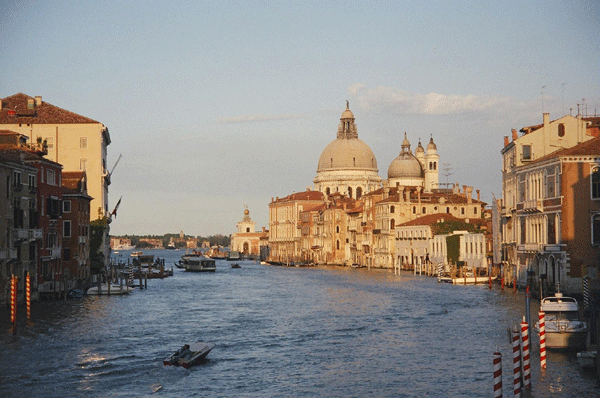
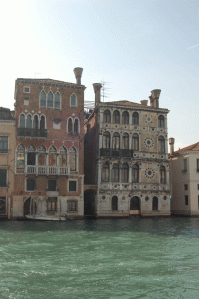


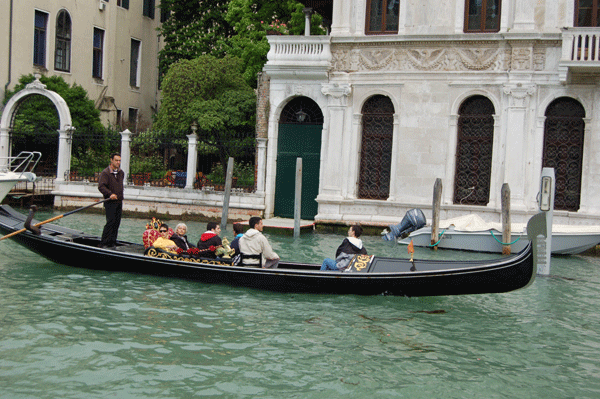

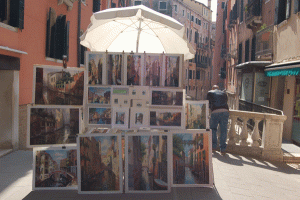
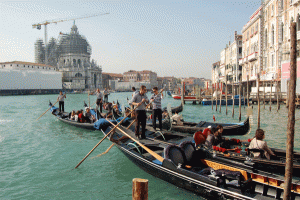





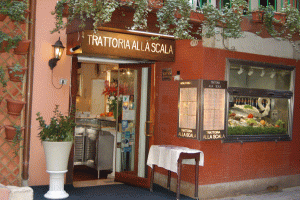
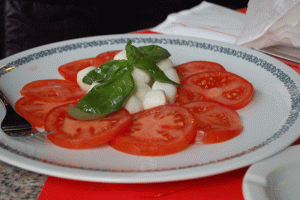
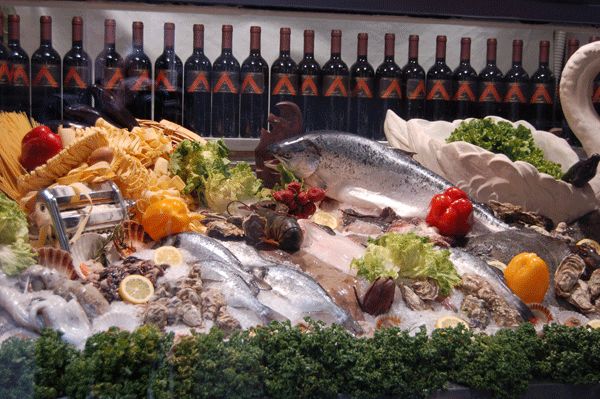
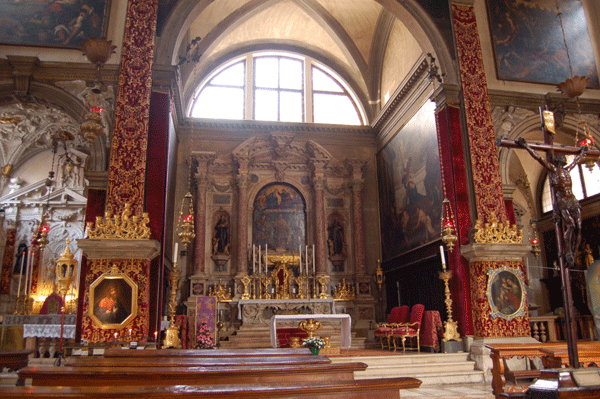

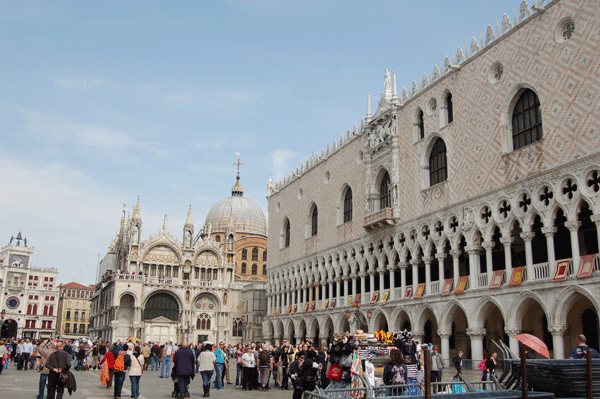
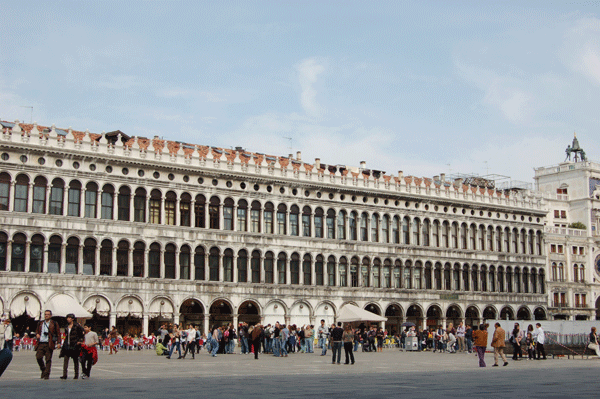
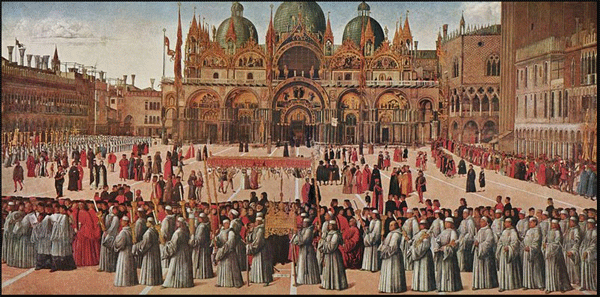

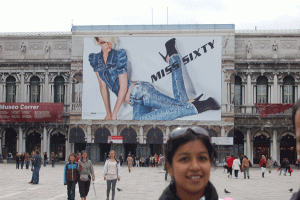


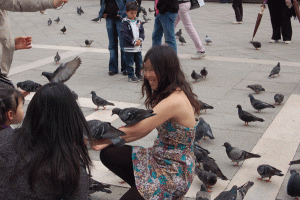

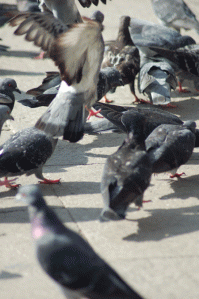
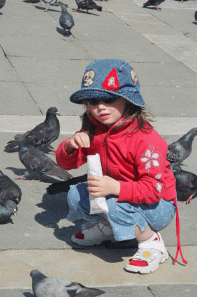

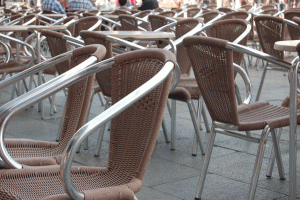
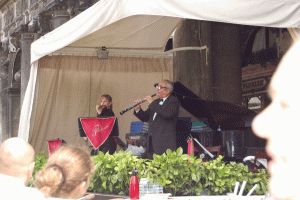
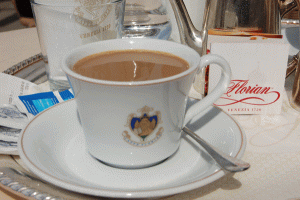
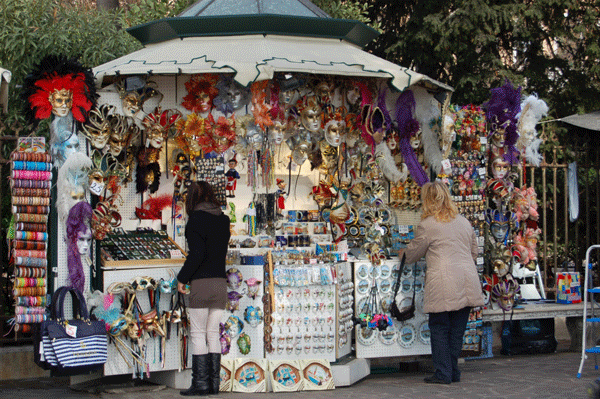
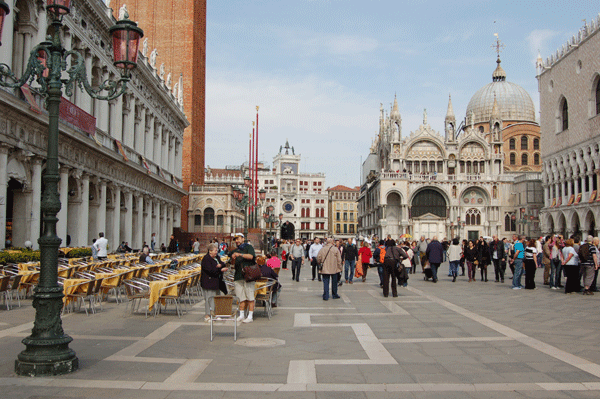
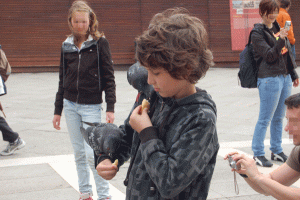

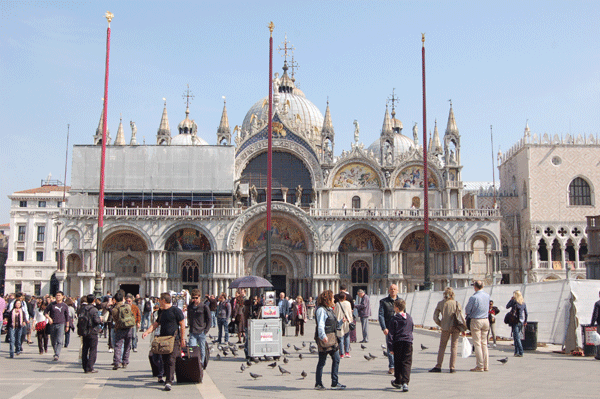
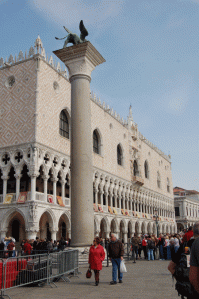
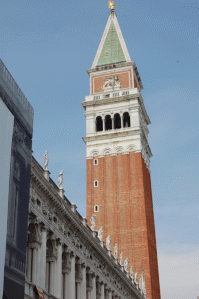
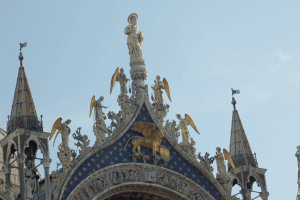

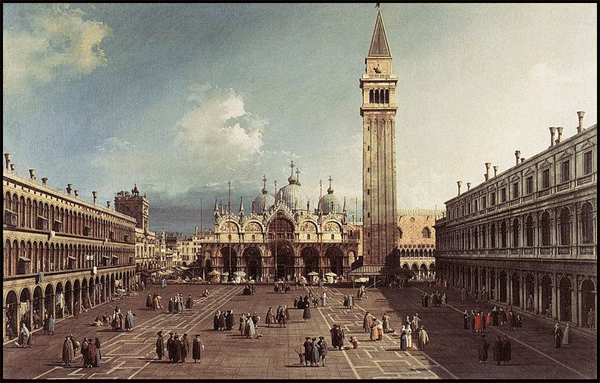

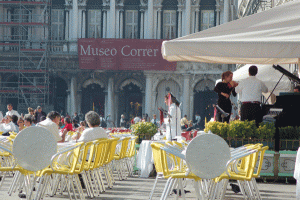



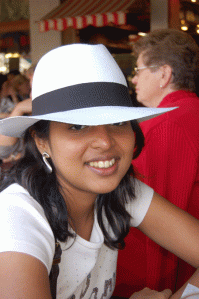
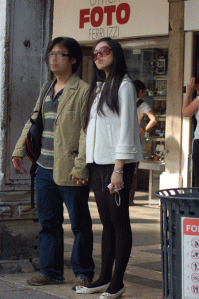
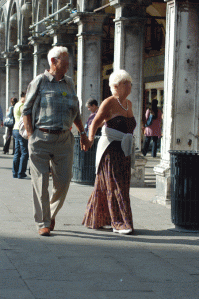
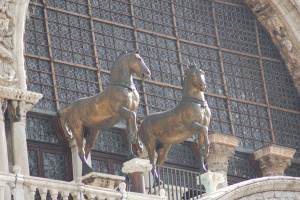



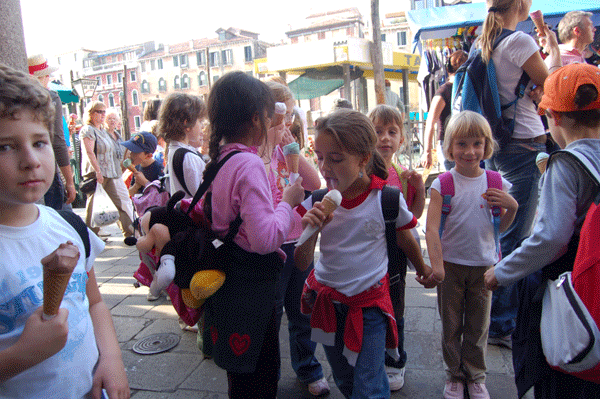

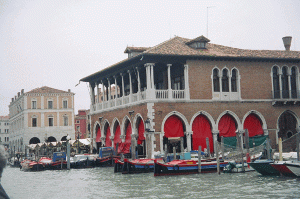
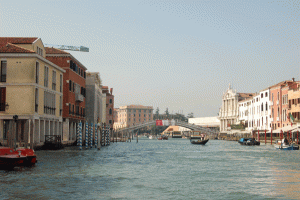
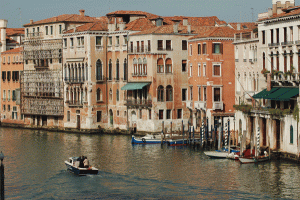
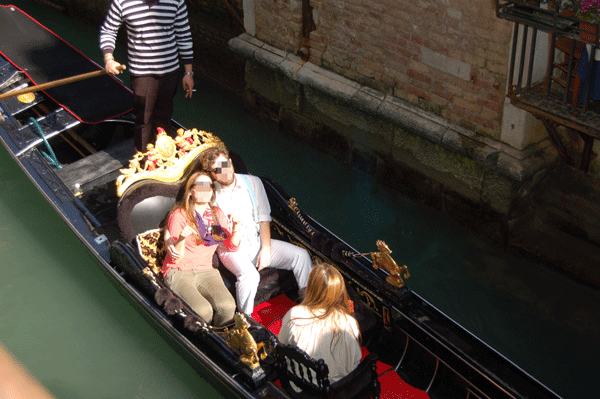
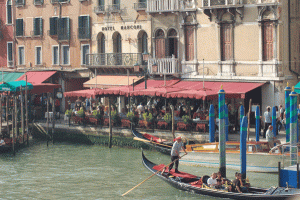

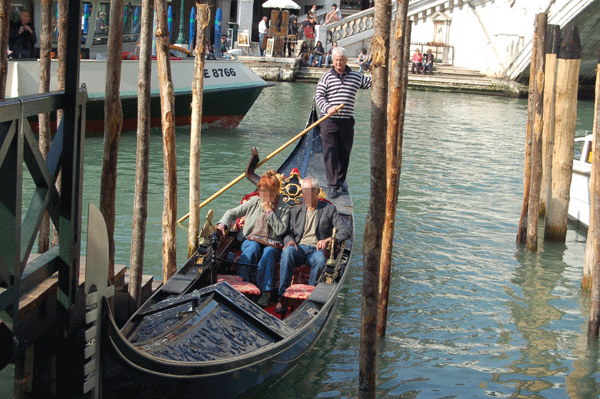
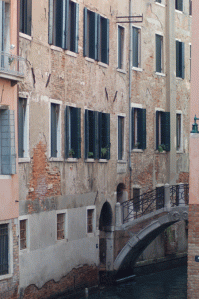
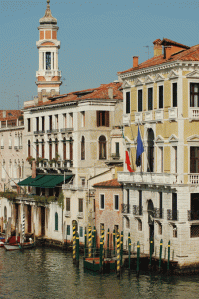

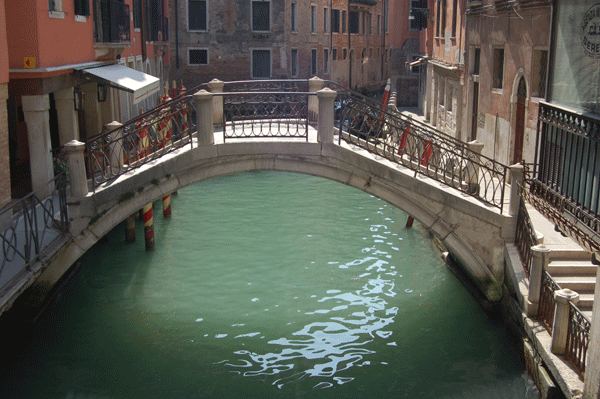

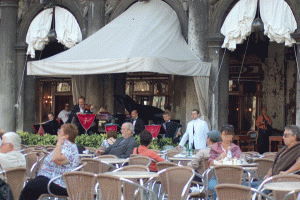


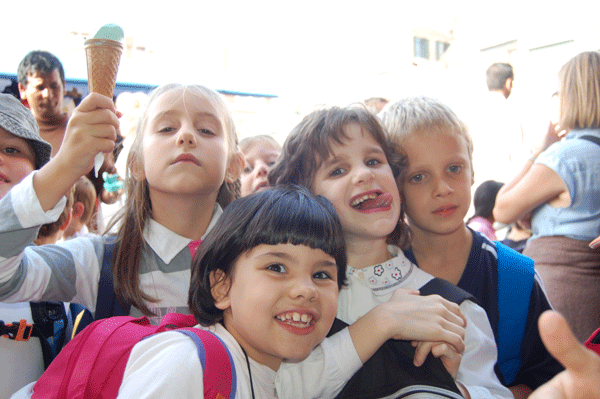
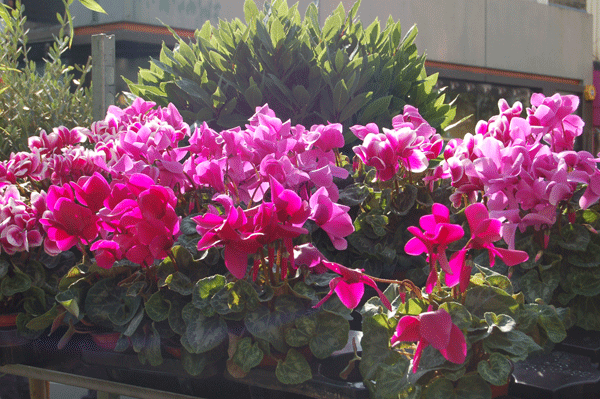
I love Venice. It is magical. And I have been to Caffe Florian. Now you’ve made me want to go again.
That’s lovely. Venice will be waiting with open arms. 🙂
I really do enjoy your articles. They are so interesting and informative. I have stopped over only very briefly in Venice, so a return visit is a must for me. I would love to go at carnival time – such an amazing sight. Thank you.
Thank you, Lizzie. I enjoy your pictures, too. Jo
Bellisima!
🙂
😊 Thanks!
Reading your travel articles is like taking a mini-vacation. Thank you for sharing your experiences and thoughts. 🙂
Thank you, Elizabeth. I like reading your post, too. Jo
Such beautiful photos of a beautiful city and rich culture. I hope there is something that can be done to mitigate flood damage before such treasure is lost and damaged.
Thank you. Absolutely true. I couldn’t agree with you more.
Oh these are all so beautiful…. I truly hope they are able to find a solution to the water damaging such a treasure… Thank you for sharing not only verbally, but visually, the history and look of such a beautiful place. 😀
Thank you, Keli.
What a beautiful and intriguing place. Thank you for the tour! 🙂
Thank you. You are welcome…..and to the real Venezia… Jo
Reblogged this on Annette J Dunlea Irish Author.
Thank you, Annette. One of the things I value is the connections and the wonderful people met online through common interests. Jo
Marvelous images and story. I’d love to go to beautiful Venice; hopefully we’ll get there one day…!
🙂
Venezia will gladly welcome you… Jo 🙂
Marvelous update on Venice. I too was so sad to see the Venice floods in the news. We were there two years ago, and I loved seeing the city!
Thank you.
A wonderful, magical trip back to Venice – I could hear the laughter, smell the wonderful food and hang over the bridges to watch the boats move along on the canals. I am reminded of a quote by Truman Capote: “Venice is like eating an entire box of chocolate liqueurs in one go.”
What a wonderful comment. Memory is the diary we all carry about with us…. Viva Venezia.
Well said…
I’ve been there thrice and all the trips have been new experiences. I remember my room overlooking the canal , where I could lie in bed watching the traffic ( not that I did so , as there was no time to just lie in bed !! ) The three days I spent each visit remain etched in my memory . I cant wait for the next visit.
Thank you for stopping by, Pearl. Nice to see you here and appreciate the reads. I understand that hotel didn’t have venetian blinds… 🙂 x
Very informative and beautiful 🙂
Thank you. 🙂
Beautiful photos and love reading your travel story!
X
Thanks, Claudia. x
Beautiful city, beautiful shots, I would love to go there again … and again … and again … and even more. Thanks for sharing
Same goes with me, too. Jo 🙂
I have always wanted to visit Venice.. It is simply beautiful. Thank you for sharing these pictures and your travel with us.
You are welcome.
great album! I love Venice!
Thank you.
These pictures are so beautiful! I have so many wonderful memories of Venice and am just dying to go back.
Thank you. They are beautiful because its Venezia! Nice that you want to go back to Venezia – Try anything once. Twice if you like it. More times if you love it… 🙂
Beautiful! I would love to visit there one day 🙂
Thank you. Good luck.
Very interesting post! I haven’t benn to Venice so far,I admit,it never really atracted me,the idea of all that water-it must be so humid to live there- but maye I could reconsider after this 😉
I am happy to read this. 🙂
Hello Jo, this is one of the most informative, interesting and beautifully illustrated pieces of writing I’ve ever seen regarding Venezia. It’s simply brilliant! Thank you much for sharing it 🙂
You are most welcome, Tracy.
I just have to visit Venice………..
You must. You will not regret it. 🙂
I enjoyed this article to its depth… Great one.
I enjoyed this article to its depth… Great one.. Makes me so tempt to actually pack up my bag and travel to all the places…
As Albert Einstein said, “The only source of knowledge is experience”. With so many other places on the queue, let your bags be prepared for a long long vacation. Sweta, experience has taught me that planning a vacation itself can be the best thing about it. Jo 🙂
That really true… Curiosity and excitements start right on the time when one starts packing to fly…I see that you travel a lot.. Lucky you!!!!
Thanks. I do. In fact, we are leaving for Bangkok on 9th and are scheduled to be back on 6th Jan. Jo
Wow such amazing pics with the amazing narration! Loved the post.
Ombretta – wine in the morning sounds nice. should try it out sometime.
And the clockmakers being blinded reminds me of the story of makers of Taj Mahal in India. The workers supposedly had their hands cut so that they couldn’t make another Taj even if they wanted to. Ah human vanity!
Thank you.
Hello my loved one! I want to say that this article is amazing, nice written and come with approximately all significant infos. I’ld like to look more posts like this .
louis vuitton outlet online
http://louisvuittonoutletonlin127.webeden.co.uk
Hola! I have just nominated you for the Very Inspiring Blogger Award
http://relaxingcooking.wordpress.com/2012/12/01/the-world-is-full-of-magic/
Cheers
Anto
Italia , beautiful, Than You 🙂
Thank you. 🙂
Venice is one of my absolute favorite places in the world. Possibly my favorite. I hate to see what’s happening as a result of climate change.
Thanks for your comments. If Venice disappears into the sea, it would take with it a tremendous part of world’s historic and artistic patrimony. Ever since the issue about “La Serenissma” came up after the floods hit Venice on November 4, 1966, the Italian government, UNESCO and other international private agencies were formulating plans to protect Venice and its lagoon from “Acqua Alta”. Let’s hope a solution is finally achieved when Project MOSE (MOdulo Sperimentale Elettromeccanicoor or Experimental Electromechanical Module) will be completed by June 2015 and a series of barriers, navigational locks and breakwaters are set up at the three lagoon inlets of Lido, Malamocco and Chioggia.
Reblogged this on Manningtree Archive and commented:
A recap of our thoughts on our beloved Venezia during this unfortunate time when La Serenissima suffers worst series of high tides, or ‘acqua alta.’ This entry was earlier posted by me on November 25, 2012.
You give not only a wonderful read, but an enchanting see, filled with memories of visits to this splendid place. I just finished watching a documentary on Baiae – different mechanism of submersion – imagining the people of its day. We are Venezia’s people of today, so very blessed to behold all that it is. Have missed your blog for several months, but then quality over quanity, any day. Thank you so very much.
Thank you, Marilee, for your kind comments. Much appreciated.
Beautiful… A wonderful tour and history lesson as well. Thanks!
You are welcome, Bette 😊